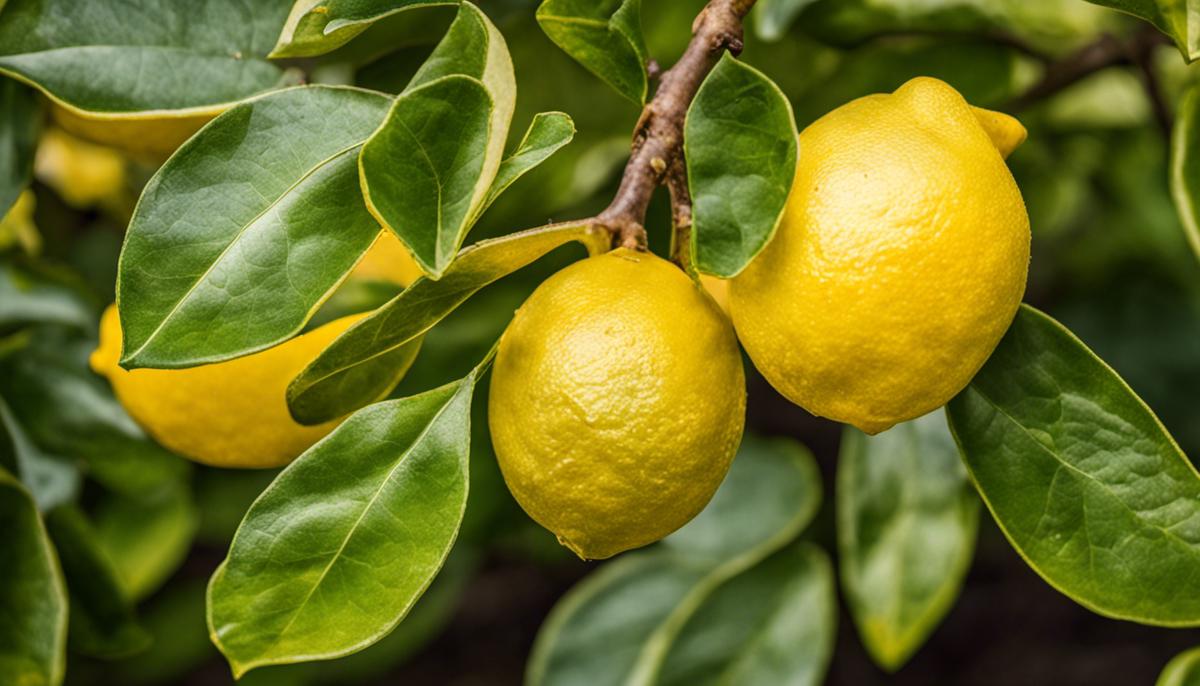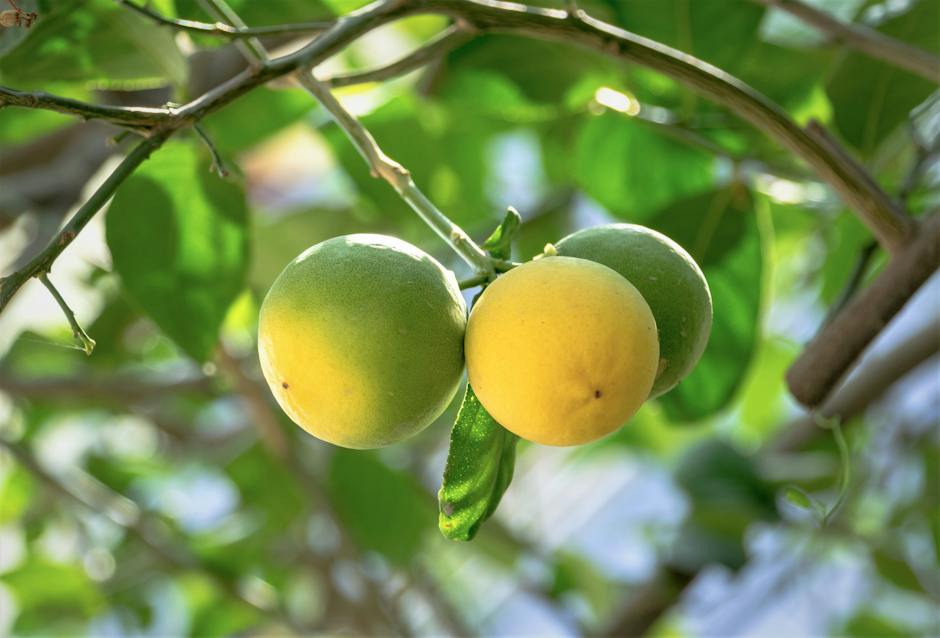Why are your Lemon Tree Leaves Turning Yellow?

One of the most frequently asked queries about cultivating lemon trees is why their leaves turn yellow. Numerous factors, from nutrient deficiencies to pest infestation or incorrect watering and light exposure, can alter the natural vibrant green hue. As such, understanding these potential causes and how to promptly rectify them is vital to the maintenance of a healthy and fruitful lemon tree. Within this domain, this discourse delves into the nuances of specific nutrient deficiencies – nitrogen, magnesium, iron, and zinc, common pests and diseases, and the importance of proper watering and lighting techniques that directly influence the overall health of your beloved citrus tree.
Understanding Nutrient Deficiencies
Spotting The Signs of Nutrient Deficiencies in Your Lemon Trees: Let’s Get Into the Details!
No matter if you’re a citrus hobbyist or a lifelong lemon tree aficionado, caring for these bright, tangy plants is nothing short of rewarding. However, like all plants, lemon trees require a precise blend of minerals and nutrients for optimal health. Not sure what to look for if your lemon tree isn’t faring as well as you’d hoped? Then you’ve come to the right place!
So, pour yourself a refreshing glass of homemade lemonade while we break down the common signs of nutrient deficiencies in lemon trees!
Yellow Leaves? Let’s Talk Nitrogen Deficiency!
When lemon trees lack adequate nitrogen, a key growth nutrient, the foliage may start to yellow. Specifically, older leaves tend to display this discoloration first. If untreated, the tree ceases to produce new growth and may even experience leaf drop, affecting future fruit yields. Boost nitrogen levels with a high-quality citrus fertilizer. Remember to follow packaging instructions – too much or too little might not solve the underlying issue!
Interveinal Chlorosis? That’s Zinc Deficiency Talking!
Zinc is critical for various metabolic processes in lemon trees. If you notice chlorosis, a condition where leaves display yellow or pale green coloring between the veins, your tree might be lacking zinc. Micro-nutrient sprays are an excellent way to address this deficit, delivering the right dosage of zinc directly to the leaves.
Weird Spots on Leaves: Sign of Magnesium Deficiency
Scattered, irregular, yellow-brown spots on your lemon tree leaves? Magnesium deficiency might be the culprit. This nutrient is essential for the process of photosynthesis, and providing a supplement can prevent leaf loss and promote overall health. Applications of Epsom salts diluted in water make a great, garden-friendly magnesium supplement.
Leaf Tip Burn: Hello, Potassium Deficiency!
Seeing leaf edges becoming necrotic, or “burned”? This is a telltale sign of potassium deficiency. Besides, you might notice an underwhelming fruit yield and smaller lemons. Applying specially formulated citrus fertilizers with high potassium content can counter this deficiency and revive your lemon tree’s health.
Stunted Growth: Let’s Look At Phosphorus Deficiency
Phosphorus is a crucial nutrient for your lemon tree to regulate energy transfer and stimulate new growth. Signs of phosphorus deficiency include an overall stunted growth, especially in younger trees. Using a phosphorus-rich fertilizer can get your tree back on track.
To Wrap Up: Prevention is Key!
Now that you’re equipped with this knowledge, it’s time to turn that lemon tree frown upside down! Constant monitoring is the key. Every leaf and fruit tells a story – make sure you listen and provide your lemon trees with what they need. After all, a healthy lemon tree is a fruitful one!
Happy lemon growing!

Pest and Disease Identification
Heading into the world of citrus, and more specifically lemon trees, we all want to see that burst of green leaves on our patio trees, don’t we?
It’s disheartening to discover yellowing leaves. While mineral deficiencies often cause this, several pests and diseases can also be the culprits.
Call it the enemy No. 1: Citrus Psyllids. These tiny sap-sucking pests love to target new growth on our beloved lemon trees. Their saliva can cause the leaves to yellow and curl. But it gets worse. They are carriers of Citrus Greening Disease; an incurable disease that results in yellowing leaves and mottled fruits.
Making the trouble more significant are Aphids. These tiny invaders suck the life out of leaves, causing them to wilt and yellow. A stubborn infestation can even lead to a loss of leaves altogether! Yikes! They are often accompanied by Ants, who not only protect them from predators but also carry them to uninfected areas, hence spreading the damage even further.
You might spot a Whitefly or two buzzing around your lemon tree at dusk. Although they may seem harmless, they’re far from it. They feed on the underside of leaves causing them to yellow and drop, and their excreting honeydew substance leads to sooty mold.
Spider Mites, tiny devils almost invisible to the naked eye, can cause havoc on the lemon tree leaves. The damage they do, often mistaken for a disease, presents as yellow or bronzed leaves that may eventually drop off.
Now, the fungal disease, Anthracnose, can take the blame for yellowing the leaves, too. It causes a yellow halo around the leaf spot which gradually grows larger.
Root Rot Diseases can be particularly troublesome for our lemon trees. Phytophthora, a unique type of root rot, causes leaves to turn yellow while the veins remain green.
Now you know the culprits looking to harm your trees, go ahead and make use of pest control measures and practices to keep these intruders at bay. Regular inspection and immediate action will nurture healthy, vibrant, and green lemon trees, just as it should be! There’s something incredibly rewarding about saving a tree from potential harm, and this wealth of knowledge certainly makes that task much simpler. Dive right in, the lemon trees need you! Happy gardening!

Proper Watering and Lighting Techniques
Water and Light: The Yin and Yang of Lemon Tree Care
An experienced citrus tree keeper knows all too well the challenges involved in providing optimal water and light conditions. Here comes an exploration of another twist that can leave a novice citrus hobbyist mystified: the role of improper watering or lighting in causing yellow leaves on a lemon tree.
Overwatering is one leading cause for yellowing leaves in lemon trees. It triggers root rot disease, which starves the plant’s roots of oxygen, leading to its decline. Intriguingly, for these moisture-loving plants, too much of a good thing can quickly turn sour! Combatting overwatering entails holding back the hose until the top two inches of soil are dry to touch. Don’t shower the leaves—keep the focus at the base of the tree!
Conversely, underwatering or drought stress can result in curling leaves, wilting, and ultimate yellowing. Keeping a regular watering schedule based on the tree’s growing conditions is key. A fully established lemon tree prefers deep watering rather than frequent shallow sips.
Let’s shed some light on the lighting question next. Lack of light can turn citrus tree leaves pale green or yellow. These rays of sunshine need at least six hours of sun daily for photosynthesis. Without adequate light, a lemon tree cannot produce the energy necessary for growth, leading to yellow leaves. Make sure your tree is placed where it can bask in plenty of natural sunlight.
On the flip side, don’t scorch your citrus with too much direct sunlight, especially for young or indoor plants. High light intensity can cause leaf scorching, further presenting as yellowed or fallen leaves.
Indoor lemon trees need special attention when it comes to lighting. The use of grow lights can make a fruitful difference, recreating the optimal intensity and spectrum of light usually enjoyed by their outdoor siblings. Remember, however, not to place these lights too close to the leaves to prevent burning.
Understanding the intricate dance between watering and lighting is a critical part of lemon tree care. While these seem like basic requirements, mastering the precise amounts they need can take some time and experience, so be patient. Remember, no journey of a thousand miles (or in this case, flourishing lemon trees) ever began without a single step and a few yellow leaves!

In essence, a lemon tree with lush green leaves is emblematic of a healthy and thriving plant. However, yellow leaves are a call to action, indicating nutrient deficiencies, pests or diseases, or improper watering and lighting conditions that need to be addressed promptly. Amending these issues through learning about the specific nutrients required, diagnosing pest problems, and practicing proper watering and light exposure are imperative to restoring the tree’s vitality. Remember, nature speaks to us in signs; and yellow leaves, in this case, is its way of asking for your help to ensure the growth and longevity of your citrus companion.



